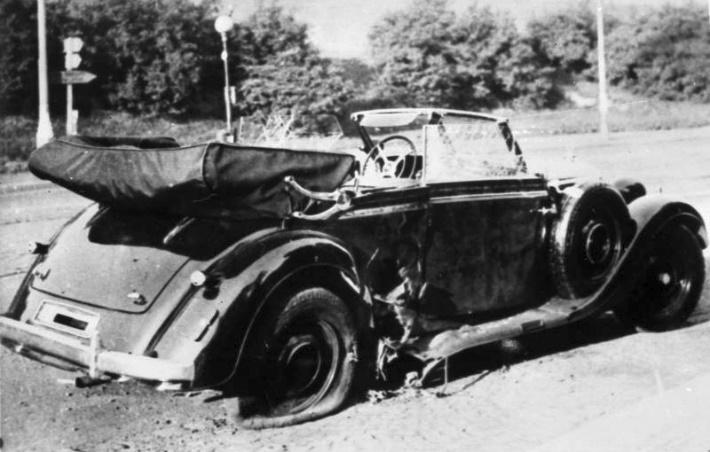NEWSLETTER 17th Sept 2019
ADVANCE NOTICE OF PROPOSED 2020 OVERNIGHT TRIP TO ROCHESTER
We are exploring the possibility of arranging a group trip to Rochester in Kent, with an overnight stay, visiting the historic Chatham shipyard complex on the return journey. The outward journey would be on Sunday 6th September 2020, staying overnight in a Best Western Hotel in Gravesend and returning on Monday 7th September via Chatham. The cost for half-board and entrance fees for Chatham Dockyard would be £145 per person for double room and £165 per person single room. The hotel books up very quickly and to ensure that we have enough people to justify making this trip we need to know very rapidly how many of our members and friends would be interested in it. Isobel Gill will be asking members at the meeting on Friday 20th to indicate their interest. If you are unable to come to Friday’s talk but you are interested, or have any queries, please contact Isobel Gill on 01926 640426, or email: isabel.mirador.gill@gmail or reply to this Newsletter email.
Launch of CAPTURING KINETON’S PAST: the collected essays of Peter Ashley-Smith
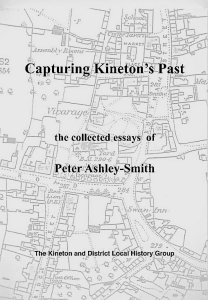 Peter’s local history essays, edited by our President Robert Bearman, have now been printed and members and friends are invited to the launch on October 4th at 7.30 in the Village Hall.
Peter’s local history essays, edited by our President Robert Bearman, have now been printed and members and friends are invited to the launch on October 4th at 7.30 in the Village Hall.
The book presents a fully illustrated and meticulously researched collection of vignettes of over 200 years of Kineton village events and characters. The late Peter Ashley-Smith’s regular articles intrigued and amused the people of Kineton when originally published in the parish magazine Outlook for over ten years.
There can be surely no better tribute to Peter’s major contribution to the appreciation of Kineton’s past than to fulfil his ambition and bring those Outlook articles into book form as a permanent memorial of his work.
Robert Bearman, the Group’s President and General Editor of the publications of the Dugdale Society, efficiently undertook the task of stitching these pieces together into a coherent volume, assisted by Gill Ashley-Smith, with illustrations from David Beaumont’s comprehensive collection of historic photographs of Kineton, and extracts from Peter’s and Gill’s archives.
The result is an attractive 128 page paperback with 55 illustrations, retailing at £9.99. It is obtainable from kinetonhistory@yahoo.co.uk or at the launch.
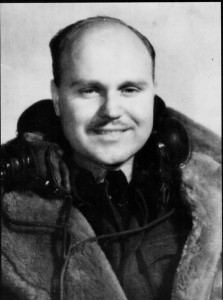 Our first evening talk after the summer break is on Friday 20th September entitled Shadows of the Past: WWII, to be given by Paul and Terry Gaunt, cousins of our Vice-Chairman Roger Gaunt, about the exploits of Roger’s uncle, Phillip “Tubby” Gaunt, as a WWII bomber pilot. Paul Gaunt has written a book about his father’s career, from training to a crash landing in Croatia. You will have to come on Friday to hear the end of that story …..
Our first evening talk after the summer break is on Friday 20th September entitled Shadows of the Past: WWII, to be given by Paul and Terry Gaunt, cousins of our Vice-Chairman Roger Gaunt, about the exploits of Roger’s uncle, Phillip “Tubby” Gaunt, as a WWII bomber pilot. Paul Gaunt has written a book about his father’s career, from training to a crash landing in Croatia. You will have to come on Friday to hear the end of that story …..
If this talk prompts any KDLHG member with WWII recollections they could share please note the national project run by James Holland to collect oral histories of the Second World War (go to WarGen (http://wargen.org). If you have any doubts about the value of oral history then November’s talk by Helen Lloyd should convince even the most sceptical.
Report on 10th August visit to IRONBRIDGE GORGE 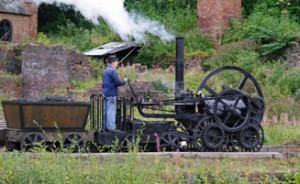 We were looking forward to visiting this World Heritage Site, a cradle of the industrial revolution, which includes Blists Hill Victorian Town, the iconic bridge itself and other historic industrial sites in Ironbridge Gorge, and it did not disappoint. The drizzle which greeted us at Blists Hill quickly evaporated, helped by a quick coffee and visits to the Bank, the grocers, the carpenters shop, the haberdashers (under 40s won’t know what that is!) and other nostalgic delights (eg fish and chips). A highlight for some was the steam locomotive, constructed to Trevithick’s 1802 designs by GKN Sankey apprentices in 1989, puffing up and down its short track, proving its practicality decades before Stephenson’s “Rocket”.
We were looking forward to visiting this World Heritage Site, a cradle of the industrial revolution, which includes Blists Hill Victorian Town, the iconic bridge itself and other historic industrial sites in Ironbridge Gorge, and it did not disappoint. The drizzle which greeted us at Blists Hill quickly evaporated, helped by a quick coffee and visits to the Bank, the grocers, the carpenters shop, the haberdashers (under 40s won’t know what that is!) and other nostalgic delights (eg fish and chips). A highlight for some was the steam locomotive, constructed to Trevithick’s 1802 designs by GKN Sankey apprentices in 1989, puffing up and down its short track, proving its practicality decades before Stephenson’s “Rocket”.
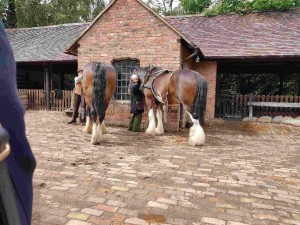 The shire horses also demonstrated that heavy haulage was still mainly horse powered. The extent of the 18th and 19th century enterprise here was clear from the ruins of the blast furnaces at the bottom of the town, and the sundry bits of iron machinery set up on the roadside, together with pigs and chickens to show that there was a domestic dimension to all this industry.
The shire horses also demonstrated that heavy haulage was still mainly horse powered. The extent of the 18th and 19th century enterprise here was clear from the ruins of the blast furnaces at the bottom of the town, and the sundry bits of iron machinery set up on the roadside, together with pigs and chickens to show that there was a domestic dimension to all this industry.
The schoolrooms, with their forms and desks and blackboards, 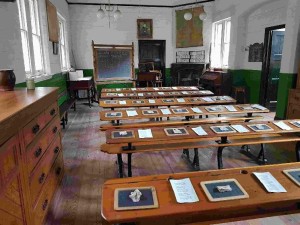 reminded a few of us of their own school days, although we had inkwells not slates. Various craftworkers demonstrated their skills such as woodcarving, and bread making. We moved on to see the iconic bridge, surprisingly high above the Severn, and now in a settlement whose existence is entirely due to its presence.
reminded a few of us of their own school days, although we had inkwells not slates. Various craftworkers demonstrated their skills such as woodcarving, and bread making. We moved on to see the iconic bridge, surprisingly high above the Severn, and now in a settlement whose existence is entirely due to its presence.
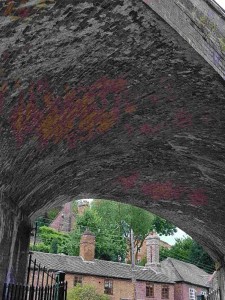 Ice cream was needed before our third and final stop at the Coalbrookdale Museum of Iron, re-opened in 2017, full of new exhibits explaining the development of ironworking and the history of the Coalbrookdale industrial complex. It is approached through an example of the wonderful brickwork achieved by Victorian engineers and builders – one of a series of skewed brick arches supporting a railway viaduct – although it proves an awkward access for today’s coaches. The museum’s objects and displays chart the increasing sophistication of ironworking technology, which was not always matched by a correspondingly sophisticated taste.
Ice cream was needed before our third and final stop at the Coalbrookdale Museum of Iron, re-opened in 2017, full of new exhibits explaining the development of ironworking and the history of the Coalbrookdale industrial complex. It is approached through an example of the wonderful brickwork achieved by Victorian engineers and builders – one of a series of skewed brick arches supporting a railway viaduct – although it proves an awkward access for today’s coaches. The museum’s objects and displays chart the increasing sophistication of ironworking technology, which was not always matched by a correspondingly sophisticated taste.
In the museum precincts is an excavated example of a blast furnace, preserved under a modern tent-shaped structure. The remains are a serious four-dimensional challenge to work out the spatial and temporal jigsaw presented inside, although the blast furnace itself is clear enough, and impressive.
The general feeling of our group was that we could have spent more time in each of our stops, yet we only visited three of the ten historical attractions that make up the Ironbridge Gorge museum complex, spread over several miles of the valley. Our thanks are due to Isobel Gill for arranging such an absorbing trip.
World War 2 Oral Histories. A website founded by broadcaster and historian, Dan Snow, and author and broadcaster, James Holland, WarGen (http://wargen.org) is a crowd-sourced online repository of oral-history from the people who lived through World War 2. As well as containing varied stories from this fast disappearing generation, this group is now looking for individuals to join their volunteer team as interviewers in their local communities. They are also eager to hear from people who might have their own stories to tell. If you are interested in either becoming an interviewer or sharing your story, please contact Shane Greer at shane@wargen.org
KDLHG Committee Matters.
At the Committee meeting on Monday 16st of September we heard the good news that our Treasurer Ted Crofts had finally managed to quarry some cheque books out of the HSBC, albeit with the wrong name – hey ho! Peter Ashley-Smith’s collected essays “Capturing Kineton’s Past” is in print. It is priced at £9.99 and members and friends are invited to a launch party in the Village hall at 7.30pm on Friday October 4th for drinks and nibbles. We discussed a provisional speaker list for 2020-21 and suggestions for outings, including an overnight to Rochester, to be canvassed at the next meeting (20.09.19). The Christmas 2019 meeting arrangements were discussed, including a proposed Christmas entertainment by Peter Waters, which was unanimously applauded. Peter continues to work on it. The plans for the proposed archive room in the Village Hall have been approved by the District planning and building control authorities, but our estimates need to be revised upwards to accommodate some conditions relating to fire regulations. This may mean some fund raising will be necessary. The timetable for construction is now set to be in the new year, leaving a gap when the Ashley-Smith archive will require temporary housing. The practicability of short term storage at a facility in Pillerton Priors is being explored. Roger Gaunt continues to scan material from the A-S archive, and will be provided with an external hard drive to store the large files. The churchyard survey database has been discussed with the Jim Saxton and the church authorities, who are moving the church website to a server which is not compatible with the churchyard database. The database will stay as it is, with a link to the church webpage, but it needs updating. DB continues to monitor the KDLHG emails and has reported enthusiastic appreciation of the churchyard database from family history researchers. There is still a vacancy for the roles of Secretary and Programme Organiser.
Next committee meeting. There will be a brief meeting of the committee after the book launch on 4th October, and a full meeting on 18th November at 7.30, at Catherine Petrie’s home.
DF 17.09.19
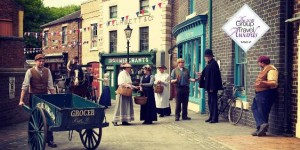
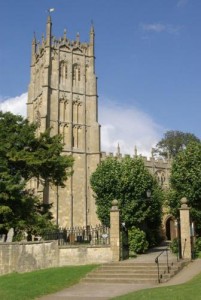 of “campa denu” – valley with cultivated fields – which had become a village by the time of the Domesday survey. The “chipping” – market – was added by Hugh de Gondeville in 1185, who also laid out the plan of the new town with regular burgage plots running back from the wide market street, still clearly visible in the town’s plan.
of “campa denu” – valley with cultivated fields – which had become a village by the time of the Domesday survey. The “chipping” – market – was added by Hugh de Gondeville in 1185, who also laid out the plan of the new town with regular burgage plots running back from the wide market street, still clearly visible in the town’s plan.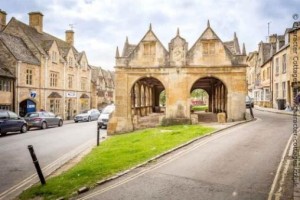
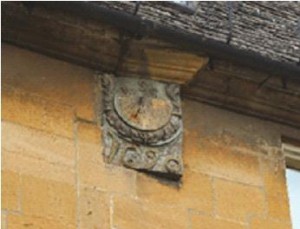 that survives are the banqueting houses and stables. The later 17th century was a period of construction, as evidenced by the many date stones proudly displayed on buildings, either newly built or added to in this period.
that survives are the banqueting houses and stables. The later 17th century was a period of construction, as evidenced by the many date stones proudly displayed on buildings, either newly built or added to in this period. 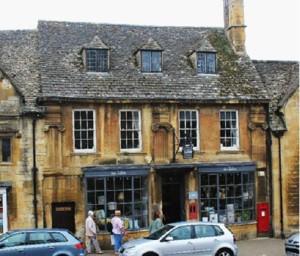 The town’s later decline was arrested in the early 20th century by the revival of the arts and craft traditions, specifically CR Ashbee’s decision to move the Guild of Handicraft to Campden in 1902. The silversmithing operation set up by the Guild is still run by David Hart,
The town’s later decline was arrested in the early 20th century by the revival of the arts and craft traditions, specifically CR Ashbee’s decision to move the Guild of Handicraft to Campden in 1902. The silversmithing operation set up by the Guild is still run by David Hart, 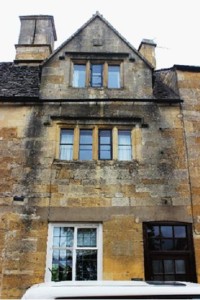 the grandson of George Hart who joined Ashbee 1901. The workshop in Sheep Street is fascinating, with the traditional tools around the walls and on benches, and bunches of old invoices hanging from the ceiling like wasps nests (also made of paper!)
the grandson of George Hart who joined Ashbee 1901. The workshop in Sheep Street is fascinating, with the traditional tools around the walls and on benches, and bunches of old invoices hanging from the ceiling like wasps nests (also made of paper!)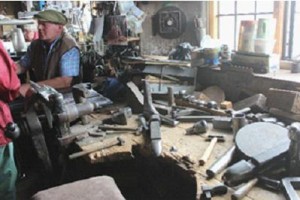 Our route
Our route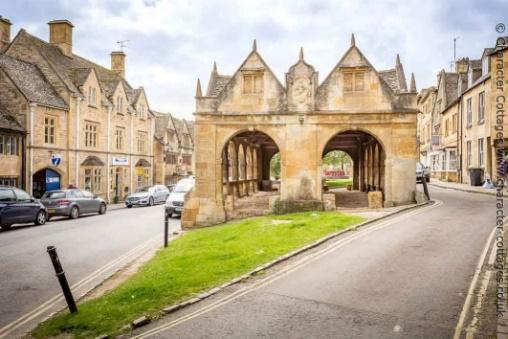 Pre Chipping Campden : Cotswold Stone, Chipping Camden 1
Pre Chipping Campden : Cotswold Stone, Chipping Camden 1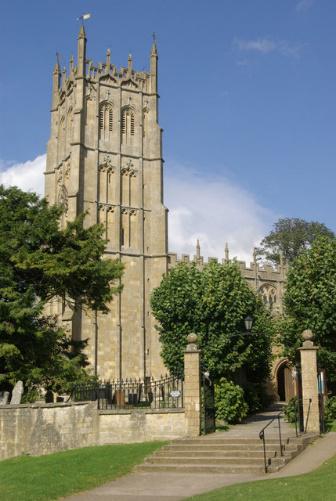 and Woolstaplers House
and Woolstaplers House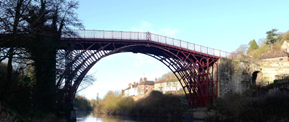
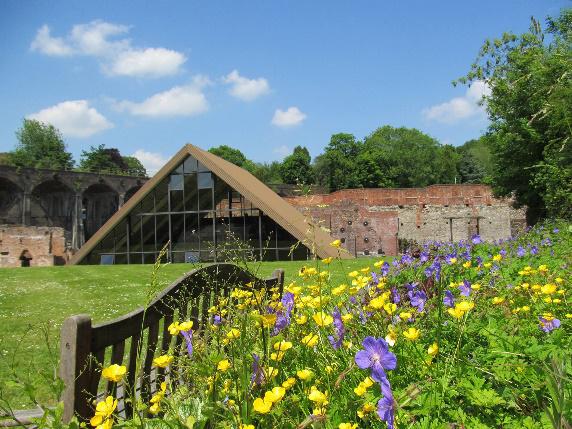 All sites have disabled access except for the upper floor of the Toll House near the bridge
All sites have disabled access except for the upper floor of the Toll House near the bridge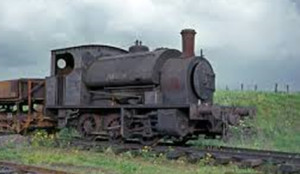
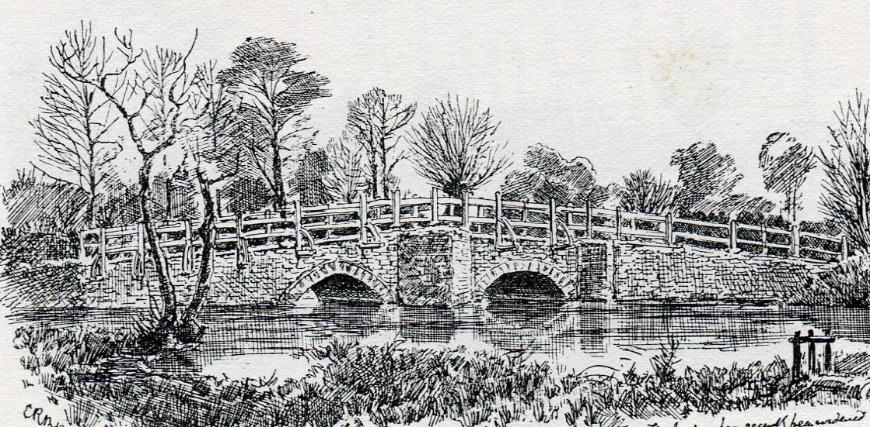 forces fought a series of skirmishes in the Cherwell valley above Banbury. The title of the talk suggests that there was more to this exchange than the traditional label would imply, so we look forward to hearing what Martin and Tony have unearthed about this action. The topic chimes with the Warwickshire Record Office initiative to transcribe the claims for compensation following the Civil Wars – local parish returns are currently being transcribed by several of our members.
forces fought a series of skirmishes in the Cherwell valley above Banbury. The title of the talk suggests that there was more to this exchange than the traditional label would imply, so we look forward to hearing what Martin and Tony have unearthed about this action. The topic chimes with the Warwickshire Record Office initiative to transcribe the claims for compensation following the Civil Wars – local parish returns are currently being transcribed by several of our members.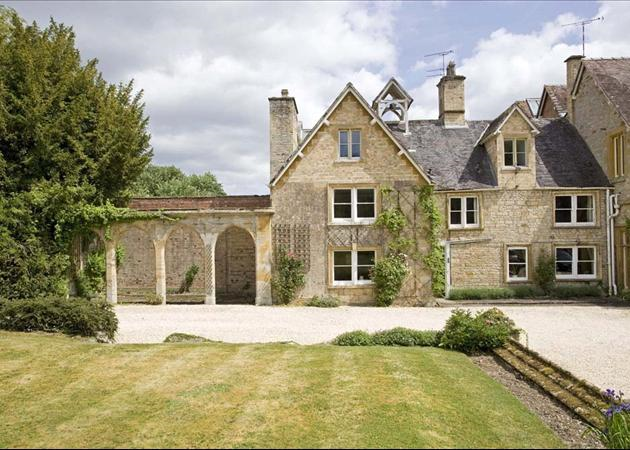
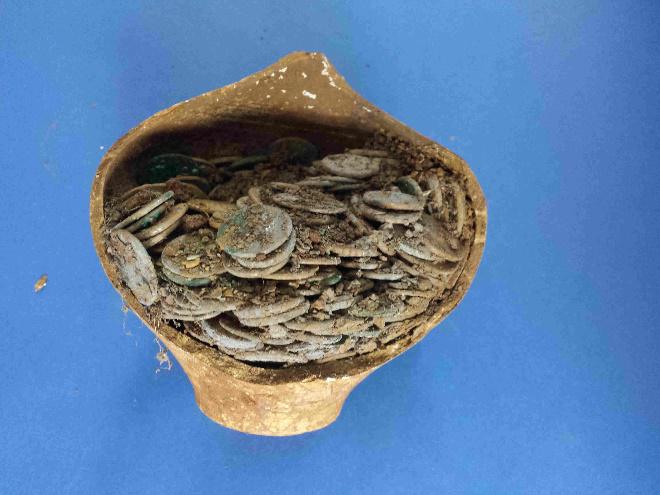
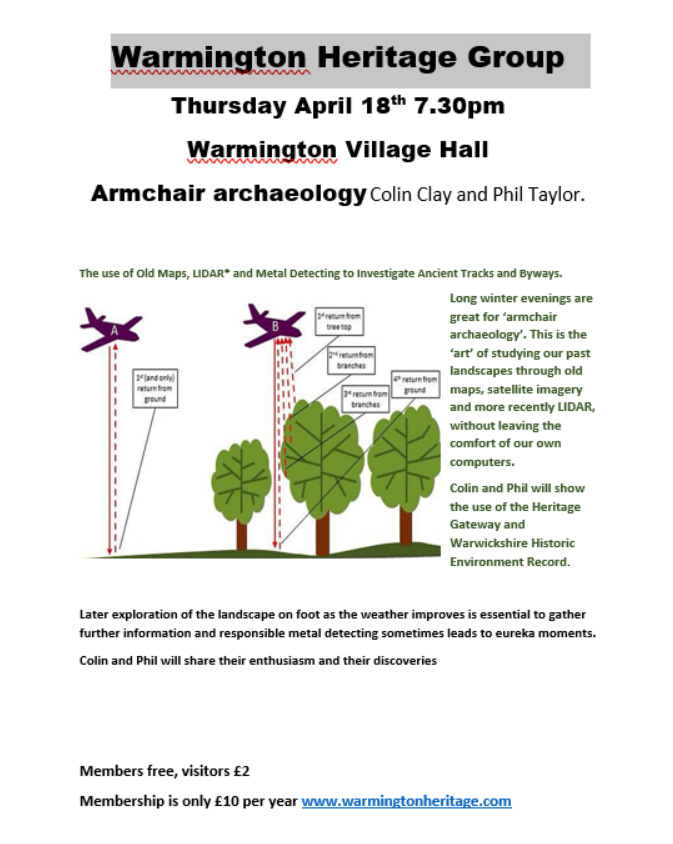
 emphasise or comment on the action, like the diminishing status of the fanfares and flourishes introducing King Lear’s entrances as his own standing declined. And in the same play the healing property ascribed to string music is used to treat Lear after the battle scene. We still use the phrase “If music be the food of love…” The music and sound in a dramatic production must contribute to the director’s vision, although Ilona acknowledged that actually when writing she believes that the music is, obviously, the most important element of the production! Considerable ingenuity might be required, for instance to accommodate non-singing actors who have songs in their roles, or alternatively, to write new material for accomplished singers, while enhancing the purpose of the production. Ilona illustrated some of the innovative ways she has made sounds, particularly the “prepared piano” when objects are laid on the strings or the strings are abused in various ways to produce new sounds (a Wigmore Hall piano may still contain a steel ball-bearing lost in one such session!). Her own experience as a violinist sometimes influenced her solutions: using an unplugged electric violin to give a thin and tremulous tone in the film Solomon and Gaynor, or a re-tuned three-quarter violin, used by Tony Sher like a ukele as the fool in King Lear. Ilona left us wanting to know more as she tantalisingly skipped through a dozen or so fascinating-looking slides without comment, except that she was running out of time, perhaps appropriately for a talk with metronome in the title. Gill Ashley-Smith led the vote of thanks for Ilona’s insights into a successful professional career, pointing out how little, sometimes, one knows about familiar people in our own community.
emphasise or comment on the action, like the diminishing status of the fanfares and flourishes introducing King Lear’s entrances as his own standing declined. And in the same play the healing property ascribed to string music is used to treat Lear after the battle scene. We still use the phrase “If music be the food of love…” The music and sound in a dramatic production must contribute to the director’s vision, although Ilona acknowledged that actually when writing she believes that the music is, obviously, the most important element of the production! Considerable ingenuity might be required, for instance to accommodate non-singing actors who have songs in their roles, or alternatively, to write new material for accomplished singers, while enhancing the purpose of the production. Ilona illustrated some of the innovative ways she has made sounds, particularly the “prepared piano” when objects are laid on the strings or the strings are abused in various ways to produce new sounds (a Wigmore Hall piano may still contain a steel ball-bearing lost in one such session!). Her own experience as a violinist sometimes influenced her solutions: using an unplugged electric violin to give a thin and tremulous tone in the film Solomon and Gaynor, or a re-tuned three-quarter violin, used by Tony Sher like a ukele as the fool in King Lear. Ilona left us wanting to know more as she tantalisingly skipped through a dozen or so fascinating-looking slides without comment, except that she was running out of time, perhaps appropriately for a talk with metronome in the title. Gill Ashley-Smith led the vote of thanks for Ilona’s insights into a successful professional career, pointing out how little, sometimes, one knows about familiar people in our own community.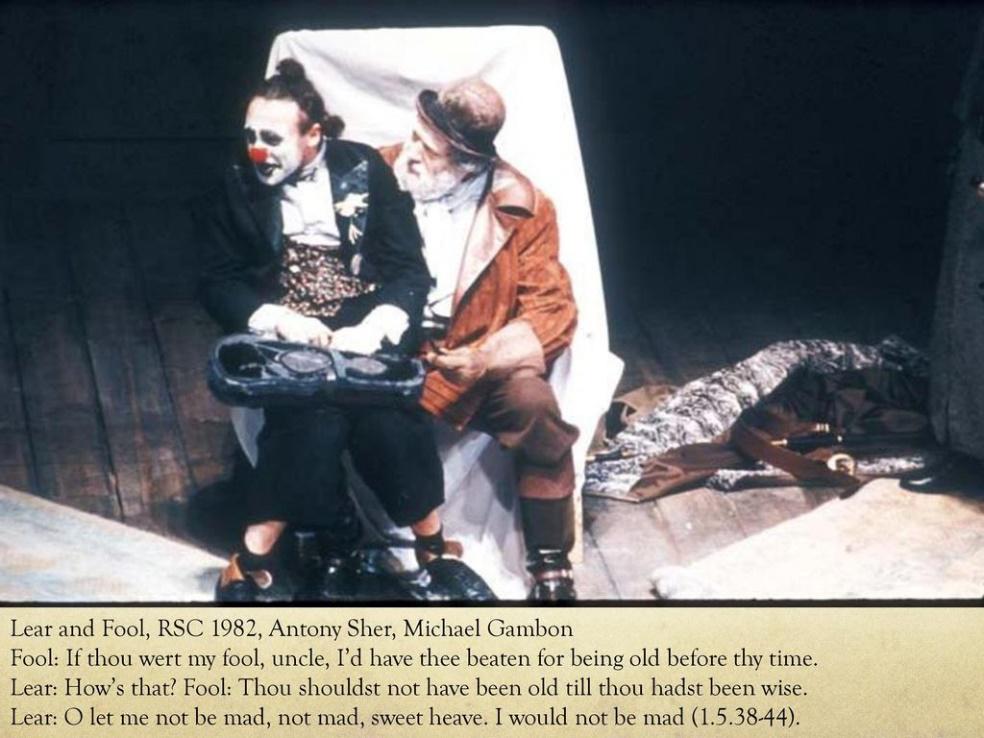 The forthcoming K&DLHG meeting is on 15th February when our member Ilona Sekacz will give us a talk entitled The Pit and the Metronome: writing music for Shakespeare. Ilona will draw on over 35 years of experience writing music for the theatre, TV, public events and films, concentrating on her long association with the RSC and the changes she has seen (and heard), caused in part by technological advances. She will describe her experience of working with innovative directors and actors, and the role of music and sound in shaping their visions of Shakespeare’s dramas. Ilona has seen many changes, from composing with pencil on manuscript paper and cutting and splicing magnetic tape, to computers which access virtually endless resources and manipulations. We look forward to hearing, literally, how our local national theatre company has approached the use of music in Shakespeare productions.
The forthcoming K&DLHG meeting is on 15th February when our member Ilona Sekacz will give us a talk entitled The Pit and the Metronome: writing music for Shakespeare. Ilona will draw on over 35 years of experience writing music for the theatre, TV, public events and films, concentrating on her long association with the RSC and the changes she has seen (and heard), caused in part by technological advances. She will describe her experience of working with innovative directors and actors, and the role of music and sound in shaping their visions of Shakespeare’s dramas. Ilona has seen many changes, from composing with pencil on manuscript paper and cutting and splicing magnetic tape, to computers which access virtually endless resources and manipulations. We look forward to hearing, literally, how our local national theatre company has approached the use of music in Shakespeare productions.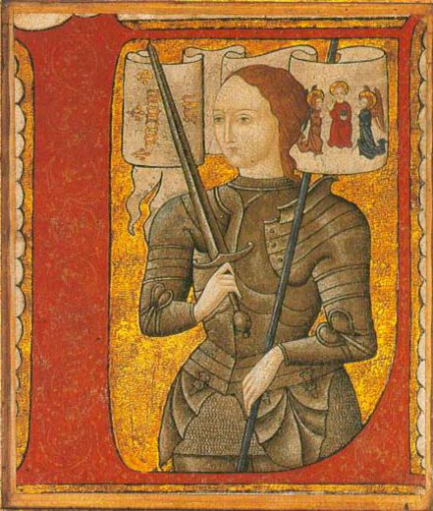 Arc
Arc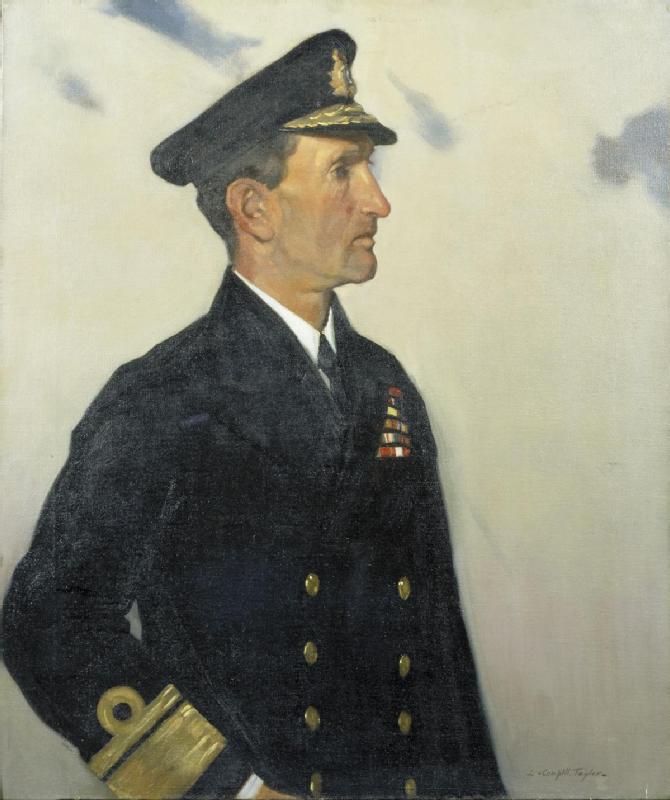 remembered in Kineton not only through his last residence “Admiral’s House” in Bridge Street, but also his solemn funeral through Kineton in 1956. He saw action in the Royal Navy fairly continuously from the late 1880s, including in the Boer War, WWI, and in interwar duties around the Baltic, and then in WWII, in his 70s, with the commandos. We look forward to hearing from David more about our most illustrious military hero, whose banner still hangs in St Peter’s Church.
remembered in Kineton not only through his last residence “Admiral’s House” in Bridge Street, but also his solemn funeral through Kineton in 1956. He saw action in the Royal Navy fairly continuously from the late 1880s, including in the Boer War, WWI, and in interwar duties around the Baltic, and then in WWII, in his 70s, with the commandos. We look forward to hearing from David more about our most illustrious military hero, whose banner still hangs in St Peter’s Church.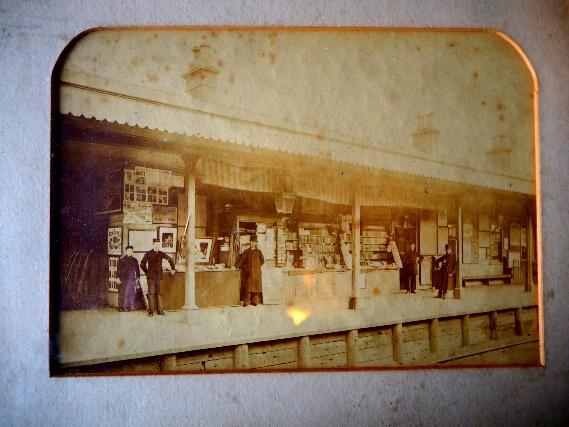 Camp. This had been a PoW camp during the war (Camp 31) and a stone has been found inscribed “2 PoW Camp 31 1943 Andernach” built into a local farmyard. George put the experience of some of the Polish fighters and their families in the aftermath of WWII into context. The pictures of the camp and the interiors of the nissen huts and temporary buildings vividly showed the way families made the most of the conditions. In the camps Polish national dress and language were fostered, and George demonstrated that he still spoke Polish. It was a surprise to hear that there is still a resettlement camp with inhabitants who have not intergrated into the British community. Peter Waters followed, with reminiscences of his family’s Chislehurst bookselling business dating back to the mid 19th century. After a brief genealogical survey Peter donned a variety of hats to enact a series of apparently real dialogues between customers and
Camp. This had been a PoW camp during the war (Camp 31) and a stone has been found inscribed “2 PoW Camp 31 1943 Andernach” built into a local farmyard. George put the experience of some of the Polish fighters and their families in the aftermath of WWII into context. The pictures of the camp and the interiors of the nissen huts and temporary buildings vividly showed the way families made the most of the conditions. In the camps Polish national dress and language were fostered, and George demonstrated that he still spoke Polish. It was a surprise to hear that there is still a resettlement camp with inhabitants who have not intergrated into the British community. Peter Waters followed, with reminiscences of his family’s Chislehurst bookselling business dating back to the mid 19th century. After a brief genealogical survey Peter donned a variety of hats to enact a series of apparently real dialogues between customers and  booksellers. These ranged from being asked to act as a creche, to being berated for not selling things other than books. I enjoyed the idea that signed copies of Shakespeare or even the Bible might be available. If only! Peter’s fine performance caught the absurdity of some bookshop conversations.
booksellers. These ranged from being asked to act as a creche, to being berated for not selling things other than books. I enjoyed the idea that signed copies of Shakespeare or even the Bible might be available. If only! Peter’s fine performance caught the absurdity of some bookshop conversations.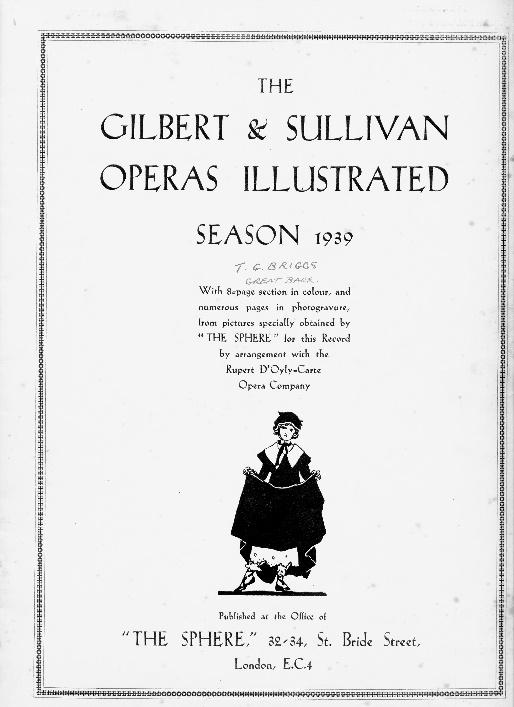 execute himself before he can execute anybody else. Bob gave us a moving rendition of “Tit willow, tit willow, tit willow”. Having reduced us to tears, he stiffened our sinews with The Yeoman of the Guard. Gilbert’s lyrics satirising the politics and mores of the late 19th century seemed strangely relevant to our contemporary situation, with many a sage head nodding as parliament, and peers of the realm, got the Gilbert treatment in Bob’s fine and individual account of the songs.
execute himself before he can execute anybody else. Bob gave us a moving rendition of “Tit willow, tit willow, tit willow”. Having reduced us to tears, he stiffened our sinews with The Yeoman of the Guard. Gilbert’s lyrics satirising the politics and mores of the late 19th century seemed strangely relevant to our contemporary situation, with many a sage head nodding as parliament, and peers of the realm, got the Gilbert treatment in Bob’s fine and individual account of the songs.
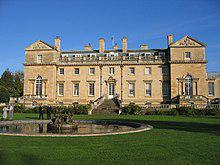 Moreton Morrell. The Hall has already featured in a number of our evenings, most recently in John Berkeley’s description of its requisition by a unit of the Czechoslovak Field Artillery in WWII. Brian’s position as a long serving member of staff at the Agricultural College, which now occupies the Hall and its estate, has given him an insider’s view of its development, and he has been writing the official history. The Hall was built by an American businessman, Charles Tuller Garland in 1906, one of several American owned houses in the area – namely Ashorne House and the short lived Moreton Paddox. Moreton Hall was luxurious, with silver door-furniture, marble bathrooms, and large oak panelled rooms. The female servants lived in the attics, the male servants in the basement. The gardens around the house included a rose garden, a cascade and pond, a tea house, a sunken garden and extensive walks. A polo ground occupied part of the estate and international polo stars played there. The estate supported a working farm, and after being sold in 1939 and then requisitioned by the military in WWII, it became an agricultural college. In the audience were past and present members of staff, as well as ex-students, and they contributed anecdotes and reminiscences during the questions session. Brian Lewis remembered the marble bathroom; and the billiard room’s later function as the student bar seemed to hold fond memories too. The recent diversification as a conference and wedding venue may have saved some of the college assets from the
Moreton Morrell. The Hall has already featured in a number of our evenings, most recently in John Berkeley’s description of its requisition by a unit of the Czechoslovak Field Artillery in WWII. Brian’s position as a long serving member of staff at the Agricultural College, which now occupies the Hall and its estate, has given him an insider’s view of its development, and he has been writing the official history. The Hall was built by an American businessman, Charles Tuller Garland in 1906, one of several American owned houses in the area – namely Ashorne House and the short lived Moreton Paddox. Moreton Hall was luxurious, with silver door-furniture, marble bathrooms, and large oak panelled rooms. The female servants lived in the attics, the male servants in the basement. The gardens around the house included a rose garden, a cascade and pond, a tea house, a sunken garden and extensive walks. A polo ground occupied part of the estate and international polo stars played there. The estate supported a working farm, and after being sold in 1939 and then requisitioned by the military in WWII, it became an agricultural college. In the audience were past and present members of staff, as well as ex-students, and they contributed anecdotes and reminiscences during the questions session. Brian Lewis remembered the marble bathroom; and the billiard room’s later function as the student bar seemed to hold fond memories too. The recent diversification as a conference and wedding venue may have saved some of the college assets from the 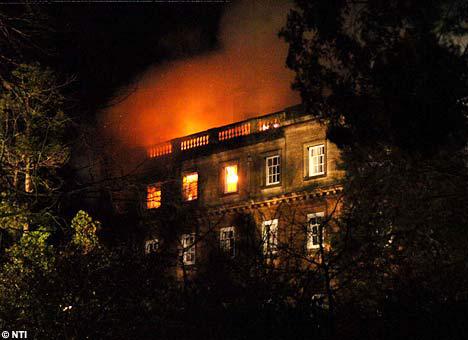 disastrous 2008 fire, which gutted most of the Hall. Many college functions, including the library, had by then been dispersed to other estate buildings. The exterior has been restored and plans are afoot to reconstruct the interior over the next few years. Brian Lewis gave Brian (Morgan) our thanks for illuminating the history of a building and institution on our doorstep, and which has influenced so many of our members’ subsequent careers.
disastrous 2008 fire, which gutted most of the Hall. Many college functions, including the library, had by then been dispersed to other estate buildings. The exterior has been restored and plans are afoot to reconstruct the interior over the next few years. Brian Lewis gave Brian (Morgan) our thanks for illuminating the history of a building and institution on our doorstep, and which has influenced so many of our members’ subsequent careers.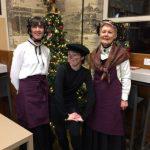

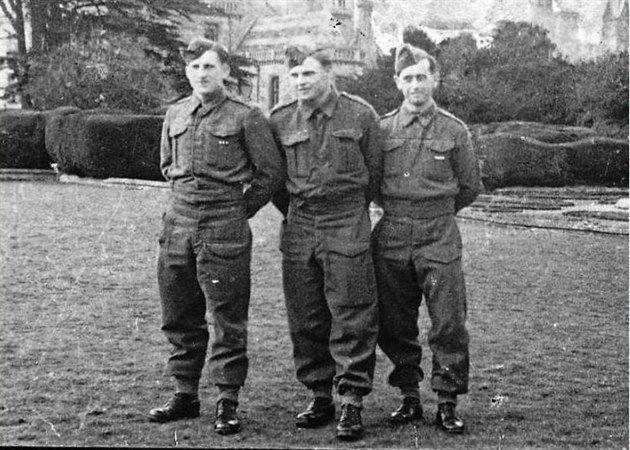 of individuals from their villages in eastern Czechoslovakia, John recounted their tortuous routes to England to escape the Nazi persecution about to overtake their homeland. The British military facilitated the evacuation of 4,000 Czechoslovak army volunteers from the south of France via Gibraltar. Once here, as the Czechoslovak Free Army, they moved around the country, training in Scotland, at Cholmondeley in Cheshire, and sent to duties in Seaton in Devon, Leigh on Sea, Lowestoft and Harwich. Their quarters around south Warwickshire included Leamington, Moreton Paddox, Moreton Morrell, Butlers Marston, Walton Hall, and Kineton.
of individuals from their villages in eastern Czechoslovakia, John recounted their tortuous routes to England to escape the Nazi persecution about to overtake their homeland. The British military facilitated the evacuation of 4,000 Czechoslovak army volunteers from the south of France via Gibraltar. Once here, as the Czechoslovak Free Army, they moved around the country, training in Scotland, at Cholmondeley in Cheshire, and sent to duties in Seaton in Devon, Leigh on Sea, Lowestoft and Harwich. Their quarters around south Warwickshire included Leamington, Moreton Paddox, Moreton Morrell, Butlers Marston, Walton Hall, and Kineton.